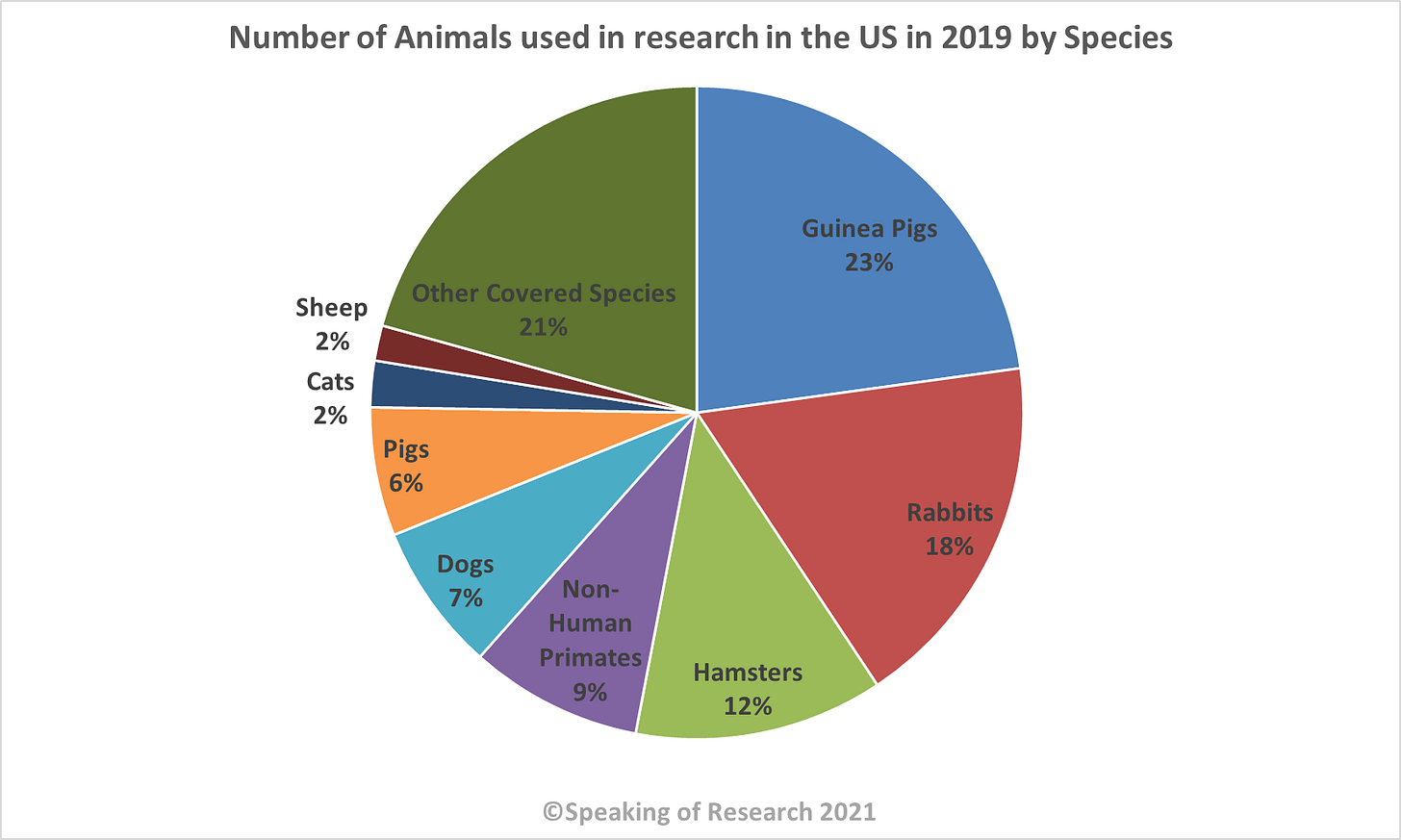First of all, my sincere apologies for being so late… I was on a “working vacation”, meaning I was away from home which makes writing a bit more difficult, plus — I had a job to do, which took some time. I promise I will post more regularly!
With the daily barrage of horrifying stories, something positive seems unreal at first – pinch me? Am I dreaming? And yet, it seems to be true. I double-checked, and the Food and Drug Administration is planning to phase out animal testing. PHASE OUT ANIMAL TESTING! An abominable practice which condemns millions of innocent creatures to a life of misery and torture.

And it’s nothing new. According to Wikipedia, there are records of ancient Greeks experimenting on non-human animals. The anatomist and physician Erasistratus, who lived from circa 304 BC to 250 BC in Macedonia, conducted investigations involving animals, as did Aristoteles. The 2nd-century Roman and Greek surgeon and physiologist Galen (Claudius Galenus) dissected pigs, goats, and Macaque monkeys, and is considered to be the “Father of Vivisection”.

Throughout the ages experiments which involved animals have been deemed acceptable, because there was no other way to find cures for deadly diseases and debilitating illnesses. Whatever solution the physicians and scientists found, it had to be tested: would it cause harm? Would it kill the patient instead of the cause of the medical condition? Better an animal dies than a human. This has been the basic premise since – well, I’d say since time immemorial.
Philosophers such as Francis Bacon (1561 - 1626) and René Descartes (1596 - 1650) established theoretical frameworks which confirmed the absolute superiority of humans. Bacon, often called the founder of modern scientific methodology, had no problem with vivisection, and Descartes – well, he firmly implanted his doctrine of mind - body, soul - matter dualism into science, philosophy, and general Western culture. Humans have both mind and body, they can be distinguished but are closely joined. Animals, on the other hand, had no mind or soul, he declared, they were similar to machines which can’t feel pain even when their bodies were damaged.
This led to excesses like those of French physiologist François Magendie (1783 - 1855) who fed a healthy, three-year-old dog nothing but sugar until the poor animal died after 32 days. Magendie was working on a theory about empty calories. He was also known for performing dissections of live animals during public lectures at the Collège de France in Paris, near the Sorbonne. They were so shocking that he was heavily criticized by his colleagues, even those who generally supported experimenting on animals.

In the second half of the Nineteenth Century Louis Pasteur became famous for developing vaccines against chicken cholera, rabies, anthrax, and other diseases. While testing them, a number of sheep, rabbits, pigs, and dogs lost their lives. Research for and discovery of Insulin, antibiotics, and vaccines against the polio virus and tuberculosis all cost the lives of countless animals; 100,000 rhesus monkeys died for the development of polio vaccines.1

The number of mice, rats, hamsters, and other rodents used in biomedical research isn’t certain because they don’t have to be reported; they are not covered by the Animal Welfare Act. However, the estimate is between 11 million and 100 million a year. One can order laboratory animals from biotechnology companies that specialize in genetically engineered mice and rats. From what I understand, the animals had their genome altered to come with certain afflictions, for example they’re highly immunodeficient, or they carry diseases such as asthma. And if you want to study metabolic diseases, you can order the Diet Induced Obese mouse Model B6. Yes, they are models and products, not so much living beings. Why am I reminded of Frankenstein.

And then there are the puppy mills that breed beagle puppies for biomedical research such as Ridglan Farms in Wisconsin, Marshall Bioresources based in North Rose, NY, or Envigo (now Inotiv; I couldn’t find any beagles among their Research Models; maybe that’s a good sign…). Although these facilities all claim that they are committed to the highest standards and treat their animals well, undercover investigations frequently found violations of the Animal Welfare Act of 1966. One breeding facility owned by Envigo was forced to close in 2022 because of injured animals, unsafe conditions, inadequate food and water, and a slew of other violations. The Humane Society of the United States removed about 4,000 beagles from the premises, found numerous temporary homes for them, and had them eventually adopted.

Non-human animals can be used for scientific research because they’re legally considered “things”. There are some exceptions for pets or “companion animals”, but for the most part legally, only a person can hold rights while animals are property. Based on the view that humans are exceptional, a.k.a anthropocentrism, the pain, mistreatment, and suffering of animals can be justified as long as it benefits humans. When one considers the many debilitating diseases that have become preventable or can be cured with medications developed through laboratory research with nonhuman animals, I’m thinking of Polio for example, such an attitude seems justified, although certainly is debatable.
Whether one agrees with the above premise or would prefer that non-human animals should be granted fundamental rights as sentient beings, testing with live animals isn’t necessary any longer. One new technology is Bioprinting which can generate organs, tissue, and bones. While still in its infancy, it could offer a solution to organ shortages and would eliminate animal testing.
Then there are In Vitro Diagnostics, tests done directly with cells, blood, or tissue samples taken from an individual’s body, “potentially capable of providing more rapid, precise, and relevant information than do some animal studies”. And the viotech company emulate develops human organs-on-chips – an advanced computational modeling. The company praised the FDA’s plans concerning animal testing:
“The FDA’s roadmap prioritizes the use of cutting-edge human-relevant systems for evaluating potential therapies—starting with monoclonal antibodies (mAbs) and eventually expanding to other biologics and small-molecule drugs. Among the NAMs specifically highlighted are Organ-on-a-Chip technologies, which more accurately replicate human biology and disease states compared to traditional animal models.”
And there are other alternatives such as Positron emission tomography (PET) and Artificial Gene Synthesis which aims to create synthetic bacteria. This sounds almost too weird when I consider that I dislike anything genetically engineered, but I have to admit profound ignorance.
The new FDA commissioner Marty Makary has been confirmed by the Senate on March 25, 2025. In two recent interviews, “Makary said President Donald Trump and HHS Secretary Robert F. Kennedy Jr. are the two most popular politicians in America right now, citing polling data.”2 Either he’s a complete idiot or, more likely, he doesn’t want to offend anybody so he can do his job. We have to wait to see how this will shake out…





